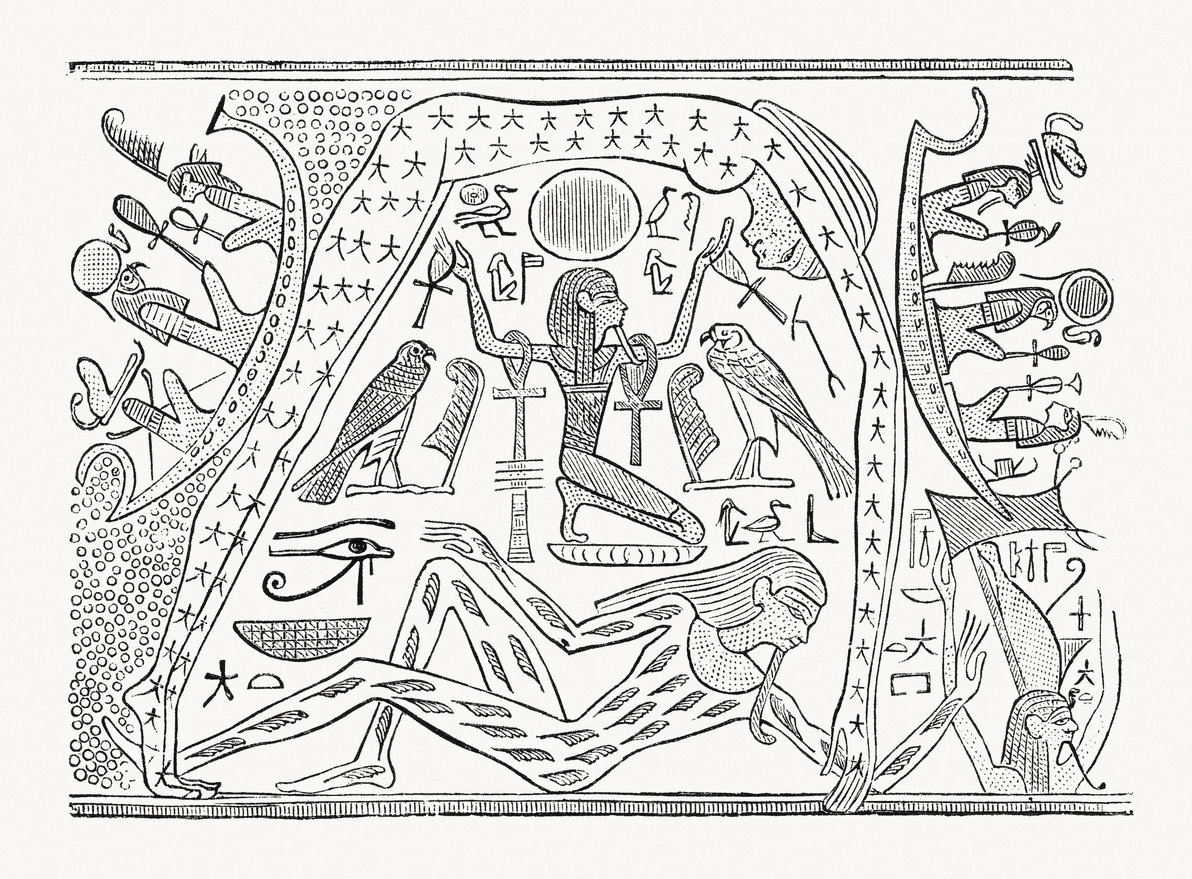In Ancient Egyptian religion, Nut was the celestial goddess of the sky, stars, the cosmos, astronomy, and the universe in its whole.
Varies depictions portray her naked and covered in stars, arching in a position that encompasses the semi-sphere of the visible sky from the perspective of the earth.
The Ancient Egyptians had knowledge of the Sun, Moon, and planets, which held strong significance within their religious beliefs. However, the precise role the Milky Way played in Egyptian religion and culture has remained ambiguous.
A new paper, published in the Journal of Astronomical History and Heritage, draws on ancient Egyptian sources such as the Pyramid Texts, Coffin Texts, and the Book of Nut, and compared them alongside simulations of the nights sky.
According to the study authors, Nut was a symbolic representation of the Milky Way, as during winter, the galaxy is illuminated in Nut’s outstretched arms, whereas in summer, it followed her backbone across the heavens.
Associate Professor in Astrophysics, Dr Or Graur, said: “I chanced upon the sky-goddess Nut when I was writing a book on galaxies and looking into the mythology of the Milky Way. I took my daughters to a museum and they were enchanted by this image of an arched woman and kept asking to hear stories about her.
Dr Graur also proposes that Nut’s role of protecting the dead when they enter the afterlife, and her connection to the annual bird migration, are consistent with how other cultures understand the Milky Way. For example, as a spirits’ road among different peoples in North and Central America or as the Birds’ Path in Finland and the Baltics.
“My research shows how combining disciplines can offer new insights into ancient beliefs, and it highlights how astronomy connects humanity across cultures, geography, and time. This paper is an exciting start to a larger project to catalogue and study the multicultural mythology of the Milky Way.”
Header Image Credit : iStock
Sources : University of Portsmouth | The Ancient Egyptian Personification Of The Milky Way As The Sky-goddess Nut: An Astronomical And Cross-cultural Analysis





